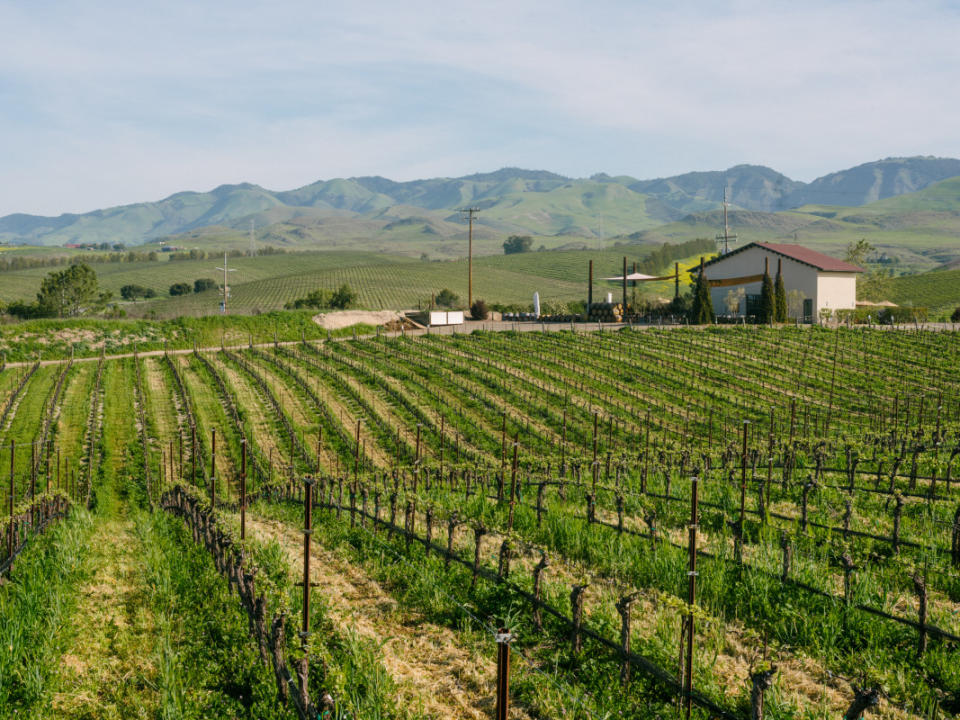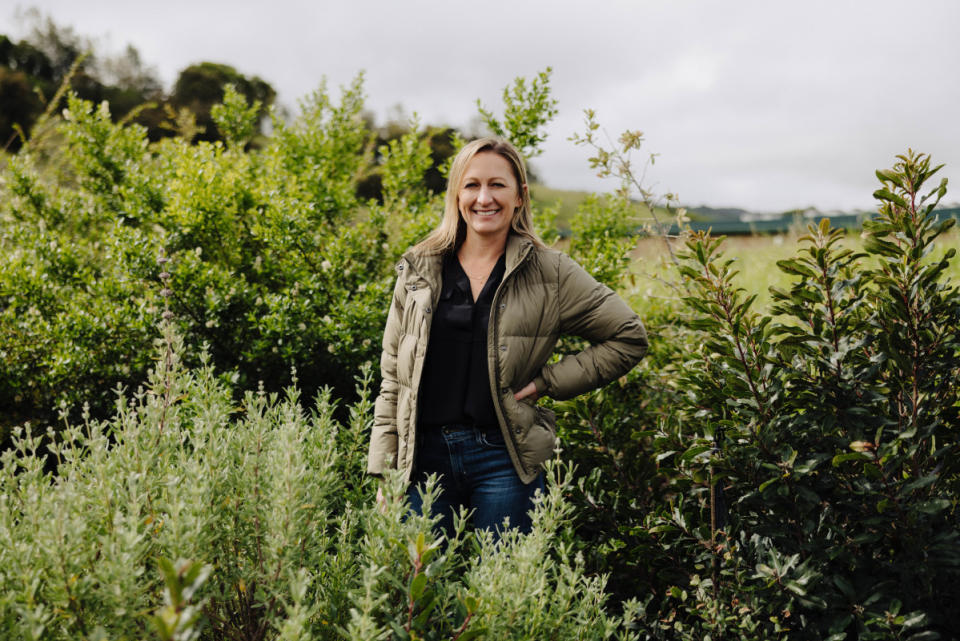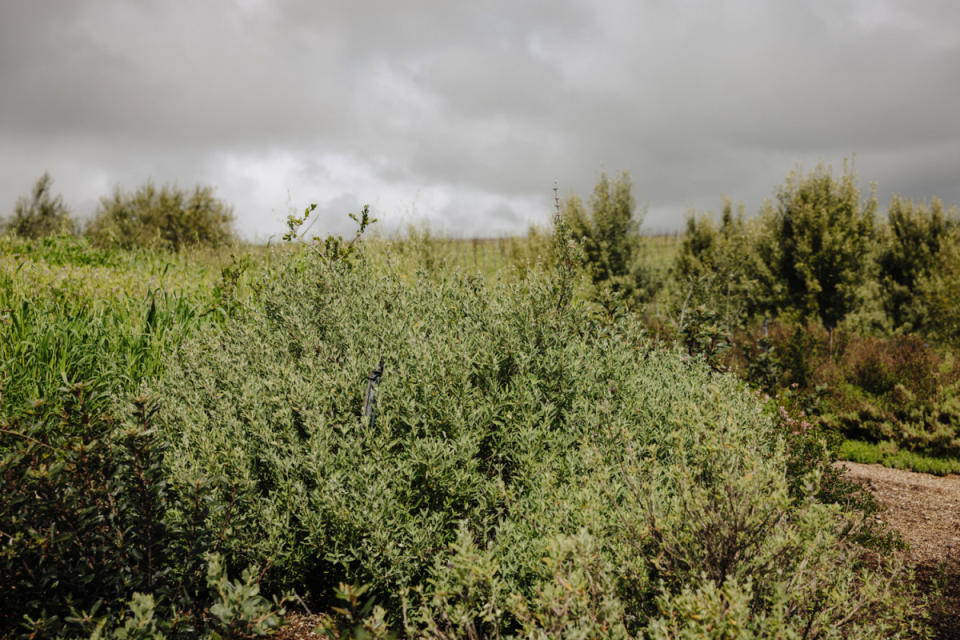This Central Coast Vineyard's Strange Secret To Going Carbon Negative
There are no shortages of wineries to visit on the central coast, where the AVAs in and around Paso Robles and San Luis Obispo have been steadily multiplying over the last several decades. Now deemed one of the most interesting parts of California when it comes to winemaking, the sheer proliferation of vineyards, tasting rooms, and estates in the region can make it hard for brands to differentiate themselves and stand out. But back before the central valley began to gain national attention, one winery was setting the standard high, not just for quality, but also for creating a sustainable footprint.

Courtesy of Chamisal Vineyards
Chamisal Vineyards were the first commercial winery to put down roots in what would eventually become the Edna Valley AVA, a notably cool climate wine-growing region that’s about 15 minutes south of San Luis Obispo. Known for both their Chardonnay and Pinot Noir, last year the brand was nominated for American Winery Of The Year by Wine Enthusiast. And even if this winery has recently been in the spotlight, these aren’t newcomers by any means—their history stretches all the way back to the early ‘70s, when the original owner, Norm Goss, decided it would be a good idea to plant some Chardonnay.
“Chamisal played a pivotal role in shaping the type of wine produced here in the region and the vineyard was first planted in 1973 by Norm Goss, a retired restaurateur, who recognized the growing popularity of Chardonnay,” explains Chamisal’s current head winemaker Brianne Engles. “Goss planted 47 acres to demonstrate the potential of growing cool climate Chardonnay and quickly garnered attention. Soon after, other varieties like Pinot Noir were planted, which further established Chamisal’s early commitment to cool climate wines and helped put the region on the map.”
Engles, who is the first woman to be appointed to the head winemaker position in the winery’s 50-year history, joined the brand in 2020 and has been instrumental in helping Chamisal not only continue to produce great wines, but also prioritize sustainability efforts that emphasize carbon-neutral and carbon-negative practices. “Sustainability is at the heart of everything we do, guiding every decision we make,” Engles says. “It's an integral part of our ethos and reflects our dedication to environmentally responsible winemaking. We’re committed to sustainability through various initiatives, such as Sustainability In Practice certified, International Wineries for Climate Action (IWCA), and on-going regenerative farming practices, among others.”
One of the other initiatives the winery implemented was the rather fascinating move of planting what’s called a “Miyawaki forest.” These small, dense forests were first used in 1976 in Japan to increase forest growth in urban areas. Native trees and other woodland plants are planted extremely close together, forcing them to compete for resources and grow rapidly. Though the forests do require tending at first, within three years they become self-sustaining. And the impact is very real: They cool air temperature in the surrounding area drops by up to five degrees, they help reduce pollution in the air, and become carbon sinks, emitting more carbon than they take in.

Courtesy of Chamisal Vineyards
“Our Miyawaki forest was planted in 2021 and became the first known winery to plant these native forests alongside our estate vineyard,” Engles explains. “We planted 45 species of native oak woodland from this area, as well as small and large native shrubs. Not only is it beautiful to look at, but it helps the environment by sequestering carbon.” Since the forest is now officially three years old, it doesn’t require any external support, and the carbon-negative equation it provides will help the winery continue to work toward their sustainability goals without even lifting a finger."

Courtesy of Chamisal Vineyards
Though Chamisal's forest is the first in North America, it's actually a bit surprising that more players in the wine industry aren't talking about this fairly simple way for land owners—and especially vineyards—to offset their carbon footprint. This relatively new forest is just one addition to the already beautiful vineyard grounds, which are located just five miles from the coast, and benefit from a long, temperate growing season that Engles notes gives the wines of this region “a vibrant fruit character and fresh acidity.” Club members and locals visit the grounds every year for an annual Lobsterfest, where wine, crustaceans, and all that make a lobster boil great come together for a night of celebration (Tickets for this year’s event are on sale now right here).
And locals aren’t the only ones who have come to love visiting this vineyard for its natural beauty, for Engles, the ambience of the grounds themselves is part of what makes her job so fulfilling. “What drew me to Chamisal initially was the reputation and pedigree of the wines,” Engle said. “However, my connection with Chamisal deepened when I had the opportunity to visit the property and walk among the vineyard rows. There was an immediate attraction to the sheer beauty and the unique ambience of the place. There's an almost indescribable magic about the terroir here, something that sets it apart and makes it truly special. It's a combination of factors, from the climate to the diverse soils, that creates an extraordinary environment for winemaking.”
Learn more about Chamisal here.

